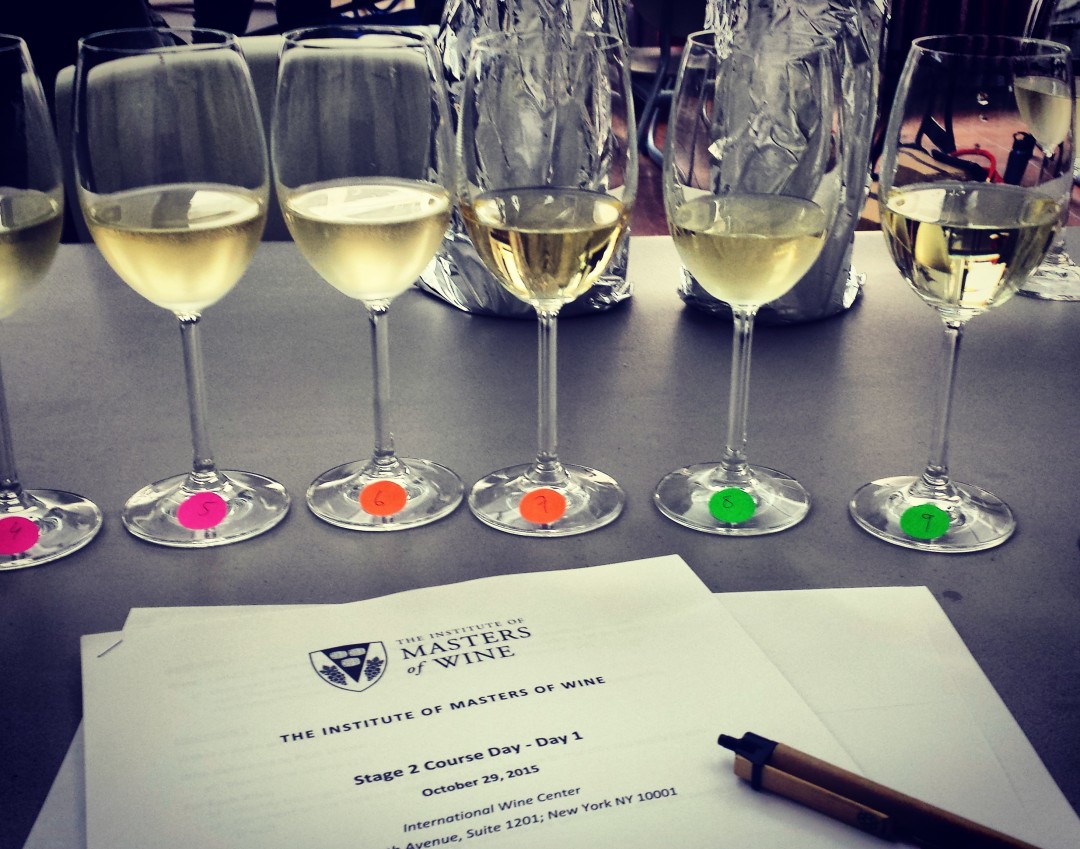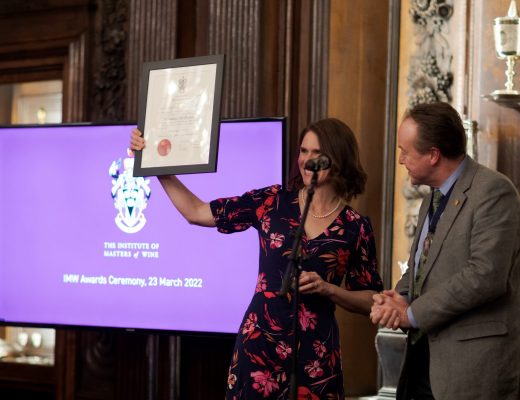Distance learning is a tricky thing. You can easily be lulled into a false sense of confidence working from the comfort of your living room. Nothing brings the reality of your progress (or lack thereof) crashing down around you like a course day. Last Thursday and Friday, I kissed my baby goodbye and headed to New York for a two-day Masters of Wine training session.
I get a lot of sidelong glances when I tell people what I am doing. They kind of smirk a little and say “so basically you sit around and drink wine all day? Gee, that sounds like hard work!” . Well, all I can say is…it is! It is not necessarily the most vital profession out there, but it is challenging. Here is what a day of MW training looks like:
You start the day with 12 wine glasses in front of you and absolutely no earthly idea what is in each glass. Generally, with blindtasting, you have a few cues that help you cheat a little… the shape of the bottle, screw cap vs. cork, and how well you know the person who poured the wine. I have a dear friend from South Africa who, 9 times out of 10, will serve French or South African wine everytime he presents a mystery bottle. This narrows down the options nicely! Unfortunately, in an MW blind tasting exam, the wines are really BLIND. They can come from a wide range of countries, a huge number of grape varieties and are poured into identical bottles before the tasting. When the examiner says go, you have exactly 2 hours 15 minutes to taste, analyze, make an educated guess and then respond to numerous questions on each wine. This equates to just over 11 minutes per wine. And the questions are not multiple choice. They require paragraph style persuasive argumentation on the grape variety, origin, vintage, winemaking techniques, overall quality and so forth – all based on the “evidence from your glass”. For example, simply stating that the wine is a 2013 Pinot Noir from Sonoma will get you about 3 points out of 20 or more. You need to give all of the reasons why you came to this conclusion, in a clear, detailed yet concise way. All the while watching the minutes slip away, and fighting the panicked feeling that you have guessed wrong or that, even if you are right, you’ll never finish in time.
As it turns out, it is not nearly enough to simply taste a particular wine over and over again until you can pick it out blind. Success in this game is based as much on theory as on actual tasting. You need to memorize the fact that Pinot Noir is thin skinned so the wine is generally paler in colour, and more translucent that a lot of other red grapes. You also need to know where it grows and the style of the wine in different regions to help you narrow down the origin. Common winemaking techniques also need to be learnt. In fact, the book learning may even outweigh actual tasting. I once correctly guessed a Rutherglen Muscat dessert wine from Australia that I had never had before, purely because it matched the description I had read.
I’ll be honest and say that the two days of tasting in New York were not my most successful. I had a few too many deer-in-the-headlights moments, stuck in front of a wine I just could not identify. And while after the first day, I was sorely tempted to hide under the covers and forget the whole ridiculous idea of this degree, the next day I had gained fresh perspective. Making mistakes at this point is almost better than getting everything right. I know what I need to work on and how to go about it. So it’s back to the drinking table for me, with a glass in one hand and a wine atlas in the other!





No Comments